A Brief History of Modern Man: The Laurasian Hypothesis
The genesis of this work stemmed from an initial seed thought, an idea as it were. A question really, “Is it possible that the basic metaphysics underlying the theo-philosophy of the ancient Chinese as well as the Greeks, stemmed from the same initial intellectual framework”? If the answer was yes, or even maybe, it would push the date of the origins of theo-philosophy and metaphysics in antiquity much further back in history than previously considered – by a few millennia at least in fact. This view is contrasted with the more orthodox view, the standard textbook view as it were, that these two belief systems evolved independently from each other.[1]
The question, while at first may seem almost moot given the lack of evidence available in the time period that would need to be understood in order to build evidence for such an outlandish hypothesis, actually upon reflection and a little bit of research seems not to be as altogether outrageous as one might think. In fact, in light of the latest research surrounding the analysis and understanding of the human genome as it relates to the origination, and population, of the world by modern species of man along with a somewhat revolutionary hypothesis on the origins of mythology in antiquity as posited by the Vedic/Sanskrit scholar Michael Witzel, i.e. the so-called Laurasian hypothesis,[2] we find ourselves in the somewhat awkward position that this common origins hypothesis of what we term “Eurasian theo-philosophy” becomes at the very least possible, and perhaps even probable – given the extent of the intellectual similarities combined with the geographic disparity, or separation, of the civilizations within which these ancient theo-philosophical systems are first seen to emerge.[3]
By (re)aligning the study of the world’s mythologies with the latest developments in human genetic research, linguistics, and archeology, Witzel theorizes that perhaps the similarities in mythological narrative that can be found across many disparate and geographically separated cultures and civilizations throughout the globe, both today in modern times as well as in ancient history, is due not to some collective unconscious, as theorized by Jung for example, but due to the “invention” and subsequent “spread” of what he refers to as a “Laurasian” mythological story line, i.e. what he refers to as a basic narrative, by a male, shamanic based culture which spread in parallel to and aligned with the migration of modern humans out of Africa and into the Mediterranean, the Near East, the Indian subcontinent and the Far East (collectively what we refer to, following Witzel, as “Eurasia” throughout this work), i.e. the so-called Laurasian hypothesis.[4]
Irrespective of the strength or weakness of his hypotheses, a topic much too broad and involving too many disciplines that the author is in no position to speak critically about one way or another, this Laurasian hypothesis does rest on fairly sound developments with respect to genetic research specifically and human population migrations that have been widely accepted by the scientific community in the last twenty years or so. This research stems not just from a detailed mapping of the human genome, but also by developments and discoveries in the rate of progression and “mutation” of Y chromosomes across generations (passed down on the paternal lineage) as well as the rate of mutation and progression of mitochondrial DNA (passed down on the maternal side), along with the mapping of the human genomes of various indigenous (i.e. relatively constant and non-itinerant) populations from across the globe over the last twenty years, all of which has provided the basis for sound empirical evidence of the following theories of human migration, revolutionizing our understanding of the history of mankind over the last 200,000 years or so. [5]
These revolutionary advancements in genetic research regarding the path of human migration across the globe out of Africa point to the following important facts, all relevant to the themes and related conclusions, if we may call them such, presented throughout this work:
- there existed a genetic bottleneck of sorts circa 100,000 years ago where the overall genetic diversity of modern humans, i.e. homo sapiens, was greatly reduced[6],
- modern humans migrated out of Africa in waves starting around 75,000 years ago, initially populating the Near East and Southeast Asia by around 50,000 years ago and spreading all the way to Australia (through Indonesia presumably) by no later than ~46,000 years ago, and
- this same “genetically affiliated” population of humans arrived in Europe ~43,000 years ago, supplanting the pre-existing Neanderthal populations there, and
- these genetically distinguished modern humans reached and began to populate East Asia no later than 30,000 years ago and most likely by at least 40,000 years ago.[7]
Furthermore, we combine these facts with respect to what we now know of human migration across the globe in prehistory (i.e. before writing) through study of the human genome, with the evidence that begins to appear for Cave art drawings as well as Venus figurines in the archeological record starting around 40,000 years ago across Europe, Asia and Australia, a picture begins to emerge of the potential diffusion of intellectual, and perhaps even theological, views across Eurasia in a more cohesive manner than is typically considered.
The existence of these “archeological” artifacts reflects at the very least the existence of abstract thought combined with basic tool making and language (the sum total of which arguably distinguish man, modern man, from the rest of the species on the planet as well as from his “less civilized and intelligent” predecessors) but also marks the beginning of the use of visual and material forms of “art” – shape, form, color and image to represent an “idea” – along with of course the existence of the technological developments necessary to create such “art” as well as the requisite intellectual developments (i.e. abstract thought, symbols, belief systems in and of themselves) for the creation of said symbols and arts in various forms.
Figure 1: Distribution of Cave Art in the Paleolithic Era throughout Eurasia[8]
This step in the evolution of modern man also importantly, and very relevantly to this work, marks the beginnings of mankind’s perception of the world around them as “sacred” to a large extent. For in these caves, we find colorful and descriptive scenes upon the walls of these cave which consist of various animals and beasts to which prehistoric man no doubt had a distinctive and powerful relationship to, but also distinctive hand markings and other half human and half animal type forms, similar to what we find in the depictions of Egyptian gods and goddesses for example.
These Cave art “spaces”, and the other evidence within the caves themselves such as their location deep within the caves and the evidence of the use of fire along with the existence of bones of other species of animals along with the distinctive elaborate artwork itself, arguably represents the very first evidence we have for the establishment of a “sacred space” of sorts, where some form of ritual or ceremonial “worship”, again if we may call it that, occurred and “symbols”, mostly depicting animals and female archetypical images, begin to take on a life of themselves in some respect, becoming elements of “worship”, again using that term in a broad sense.
It’s important to note that just because the first evidence for this type of “thinking”, if we may call it that, as reflected in these Cave art drawings and “sacred spaces” that we find evidence of in the Upper Paleolithic Era throughout Eurasia does not mean that the views and thoughts, the way of thinking or perception of man’s relationship to their environment and the animals and natural environment and their surroundings, did not exist or was prevalent prior to the date of these findings only that we can definitively say that we do not have evidence of man’s ability to create these images, the necessary tools and the requisite “mindset”, prior to this time in human prehistory based upon archeological evidence as it exists right now.[9]
Figure 2: Lascaux Cave drawings, circa 19,000 BCE in modern France.[10]
These Cave art drawings show not only the importance and metaphysical symbiotic relationship that these early humans had with their “environment”, in particular the animals that they relied on for sustenance and survival, but also some of the beginnings of the perception of the “mother” and “womb” as archaic elements of importance. As we find not only depictions of the “mother” or “Venus” like figures on some of these Cave art paintings, but also the fairly widespread existence of so-called “Venus figurines” in the archeological record across Eurasia during the Upper Paleolithic as well. [11]
We then are presented with the evidence for the next major advancement in human civilization in the form of the invention of agriculture as well as the domestication of various animals, all developments that are characteristic of the so-called “Neolithic Revolution”. These developments first appear in the archeological record in the “Fertile Crescent” area in Southwest Asia[12] around 10,000 – 9,000 years ago and then spread throughout Europe and Southeast Asia and the Indian subcontinent shortly thereafter, and to the Far East, i.e. Northern China and the Yellow River basin, by around 7,500 years ago.
Figure 3: Map of the world showing approximate centers of origin of agriculture and its spread in prehistory.[13]
The effect of these “technological” innovations and sociological advancements that characterize and ultimately define what historians refer to as the “Neolithic Revolution” on the structure of human society and the support it provided for the advancement and proliferation of modern humans in general throughout the world, and in particular in Eurasia, of course cannot be over-stated. For as agriculture and farming becomes adopted, and the dominant source of food and sustenance migrates from meat, fish nuts and fruits and other forms of food that had dominated the diets of hunter-gatherer societies for centuries, millennia even, prior, more permanent and larger centers of habitation start to develop, towns and small urban centers, reflecting the transformation of man being subject to and under the dominion of his environment, i.e. Nature, to man beginning to take more control of his environment and learning how to manipulate it to enhance his chances for survival. It is this more sedentary lifestyle that is primarily considered to be the cornerstone of specialization which in turn facilitated the proliferation of modern humans throughout this region in antiquity and this in turn led to further social and technological advancements, ultimately leading up to the invention of writing after which we begin to have written records of course which give us much greater insight into ancient man.
During this time period throughout Eurasia we see the development of large towns and small urban centers and the advent again of specialization, where individuals and societies as a whole begin to advance more special roles and skills which allow for the further advancement of knowledge and technology in general which of course facilitates the so-called “advancement” of society and “civilization” in general. At this time, the social structure of these ancient peoples begins to become more stratified, and a distinction arises not just between individuals responsible for ruling and governing and those that are governed, but also the people that are responsible for “doing the work” so to speak, and those that were in charge of, or managed, those doing the work, as well as the development of a specific warrior class as well that was responsible for defending (or expanding) one’s territory as the case may be.
Lastly, as part of this stratification of society, this specialization as it were, we see the development of a “scholarly” or “priestly” class, probably an outgrowth of the ancient shamans, who were not only responsible for presiding over special forms of ceremonial worship but were also responsible for communing with the spirits and ancestors, as well as “divining” the will of the gods or spirits and performing the necessary sacrifices and ceremonies to “appease” these entities to bring about, and ensure, good fortune. This is for example the social stratification we see in the ancient Vedic literature, what is referred to as Varna.[14]
The invention of agriculture and the domestication of animals and the advent of a more stable form of society, the beginnings of “civilization” as we understand it today in fact, marks the end of the Upper Paleolithic and ushers in the Neolithic Era, a time period of rapid innovation and human expansion throughout the globe and especially in North Africa, the Fertile Crescent, the Indian subcontinent and in the Far East – i.e. what we refer to as “Eurasia” in this work primarily.
From an intellectual perspective, what we find from the archeological records throughout this region during this era of rapid human expansion and evolution is not just technological advancements of the use of stone tools for various means of construction of more sophisticated homes and towns, complex building structures and systems of irrigation a well as the development of more advanced forms of weaponry and more sophisticated forms of pottery for example, but also the development of more sophisticated and complex places of worship, or again “sacred spaces”. We find evidence of this for example in the creation of the Megaliths ”, or large stone structures or monuments, during this time, in particular in Europe (Stonehenge being of course the most famous example) but also throughout the Near East and into the Far East as well – again Eurasia – representing one of the archeological hallmarks of the earliest forms of “civilization”.[15]
These developments no doubt reflect the evolution of mankind’s relationship to his environment as more “religious”, or “sacred”, to a large extent, and these early forms of “worship”, which are reflected in their very earliest form in the Upper Paleolithic “Cave art” drawings, and then come to have a more concrete manifestation in the Megalithic structures, many of which have been shown to have an astronomical significance, start to shape and form the basis, the connecting force as it were, for the various peoples in the various regions throughout Eurasia. Religion in its earliest form in fact, was “naturalistic”, in the sense that various forms of nature were appealed to, were worshipped, so that they would “produce” and “support” the necessary means of survival for the respective cultures and societies that developed. It wasn’t until later in the development of more advanced forms of civilization, in what is typically referred to as the Bronze Age, where we see the first elements of proto-writing as well as more advanced forms of metallurgy (hence the name Bronze Age). It’s also during this period of human evolution, in the earliest forms of “civilization”, where we start to see in the archeological records not just more advanced and elaborate forms of “religious structures”, but also evidence for more advanced forms of ceremonial “worship”.
Alongside these archeological developments we of course find parallel social developments where a specific class of society develops to support this critical function, i.e. what we now call “priests” or “shamans”, but whose function was to preside over the various “religious” rites and ceremonies which from a certain perspective formed the heart of these early societies. These individuals not only had intimate knowledge of the “spirit world”, the world of deceased ancestors, but also had divinatory or fortune telling type skills, where they could read various omens and provide guidance on when the best time it was to wage war, plant crops or make sacrifices to the “gods”, and also in many cases were healers, or medicine men, as well. As disease in antiquity was primarily looked upon as a form of “spiritual” ill or the possession by some sort of evil spirit.[16]
These developments, in particular the growing importance of agriculture in the survival and success of these civilizations as they start to emerge throughout Eurasia, forces these early peoples, the harbinger of the modern “civilization”, to come to a much clearer and better understanding of the nature of the cycles of the Earth and the seasons, and no doubt caused the ancient peoples to come to a greater reliance on the nature of water and irrigation as the ultimate source and sustenance of life. Necessity is the mother of invention as we know so well. We see these developments, this reliance and obsession with the importance of these “natural” resources and cycles in the survival and sustenance of these early civilizations throughout Eurasia reflected in the early mythological narratives that we find associated with these early peoples once the written records start to emerge, once writing is developed and these early myths are written down and “standardized”, or “canonized”, as it were.[17] These ancient peoples all worshipped the sun, the earth and the moon, and also in some early societies the planet Venus as well whose clear visibility in the night sky and whose cycles and rhythms, along with the moon of course, came to represent not just the feminine rhythms of creation, preservation and “rebirth” but also came to symbolize fertility as well.[18]
We find the early creation stories from the earliest written records across all of Eurasia really, for the most part without exception started with the notion of a “watery abyss” from which a semblance of order and the first pantheon of gods emerge, from which the heaven and the earth are ultimately formed. It is during this time period that we find evidence for the first astronomical observations and evidence for fairly sophisticated predictability of various seasonal events which undoubtedly represented a fundamental aspect of these people’s survival.
This “Neolithic Revolution” ushered in what is referred to as the Bronze Age of human history, a time period throughout Eurasia which is characterized not just by the invention of much more sophisticated means and methods of the creation of tools, advanced weaponry, pottery and more sophisticated forms of agriculture and irrigation techniques, but also the invention of writing in the 3rd and 2nd millennium BCE after which “history”, replaces “pre-history” and first-hand accounts, i.e. the written word or inscription, becomes the primary source (combined with archeology of course as well) of our understanding of how these people in antiquity thought, lived and behaved within the context of their environment. A new age had dawned and man had now become “civilized” in the modern sense of the term.[19]
We find evidence for the existence of various forms of sophisticated language, and writing, from at least 4,000 BCE onwards[20], a development that coincides with the end of the Neolithic Era of human history and occurs within a thousand years or so across all of Eurasia. It is this archeological evidence and the similarities in man’s perspective on the world as reflected in the earliest forms and symbols that we find throughout Eurasia in the Upper Paleolithic, as well as the earliest written records from all of these disparate and geographically separated peoples and societies, along with the now firm genetic evidence that speaks to the common ancestry of these people who settled throughout Eurasia in prehistory, that begs the question that is stated earlier in this Prologue – namely: does Witzel’s Laurasian hypothesis as it applies to mythos, specifically creation mythos, hold water and in turn is it possible that it can be extended, intellectually speaking, to apply to theo-philosophy as well as mythos?
If we were to ask this question twenty or thirty years ago the answer would be a resounding “No!” and you would no doubt not find a single scholar who was willing to put forth such a foolish thought without entirely suspending reason. However, given the advancements in the fields referred to described above, along with the work of some scholars who have proposed direct connections between and among the ancient mythos and intellectual strains of thought between the ancient Sumer-Babylonians, Indo-Aryans and ancient early Greeks (the Hellenes), combined with Witzel’s work which draws parallels both linguistically, genetically and mythologically between and among these peoples across the entire Eurasian region in antiquity, it does beg the question as to when how far back in history can these narrative lines, these ancient mythologies, and in turn these ancient theo-philosophies, be drawn, and when the art of expression, i.e. spoken language, is actually born to carry with it consistent and persistent symbolic thought.
It’s not an enormous intellectual leap to hypothesize that the first stories that are told, and are preserved, are the mythological narratives that Witzel specifically analyzes, what we have come to refer to as “myth”. But mythology morphs and is interwoven into theology deep in antiquity and arguably the two domains of study as we delineate them today, do not split from each other until much after the advent of the written word, and in turn philosophy, in the latter part of the first millennium BCE. In other words, if any symbolic set of thoughts, words or ideas were to be preserved and/or spread amongst these early Upper Paleolithic populations of modern man which we have ample evidence now that had and were spreading throughout Eurasia during the Upper Paleolithic (c. 50,000 years ago to 10,000 years ago until the advent of the Bronze Age), it would in fact be the kind of ideas, figures, shapes, symbols and relationships that we find being explored by the Pre-Socratic philosophers as well as the original authors and interpreters of the Yijing.
Hence the question as to what extent the core, underlying symbolic representations of these seemingly disparate philosophical systems are fundamentally similar and if so to what extent can this similarity potentially be explained by a shared common ancestry that reaches much further back into prehistory than is commonly thought, believed or taught by modern scholarship in ancient history. For what is clear, and for which there exists no evidence whatsoever, is that there was very little if any direct cultural exchange, intellectual economic or otherwise, between the civilizations of the Mediterranean and Near east and the Far East across the virtually impenetrable Himalayan mountain range in the first millennium BCE when the first written records appear in these respective civilizations throughout “Eurasia”.[21]
Therefore, if any strong patterns of similarity and analogy could be drawn between the seed theo-philosophical systems of these geographically separated and culturally distinct civilizations, once could make a strong argument, i.e. the Laurasian hypothesis, that these similarities are due to the spread or diffusion of similar ideas by prior generations of men rather than distinct inventions by two separate and vastly different intellectual centers of development if we can call them such.
[1] The paper that reflects these commonalities from a numerological perspective between the Pythagorean school as reflected in the Tetractys and Yijing metaphysics as reflected in the Ten Wings commentaries is entitled “Numerology and Arithmology in Pythagorean Philosophy and the Yijing” and can be found here: https://www.academia.edu/27439070/Numerology_and_Arithmology_in_Pythagorean_Philosophy_and_the_Yijing.
[2] The Origins of the World’s Mythologies, E.J. Michael Witzel. Oxford University Press, 2012. In this work, Witzel His work looks to (re) categorize and revolutionize the study of mythology, which as analyzed by the likes of Joseph Campbell and Carl Jung in the twentieth century, had already found many common parallels across many different cultures and (ancient) civilizations that could not be explained by simple so-called “cultural borrowing” alone and which in no small measure led Carl Jung to develop his theory of the collective unconscious. See pages 208-278 specifically.
[3] Comparison of ancient mythology, with a specific focus on cosmological motifs in particular, along with the ancient theo-philosophical systems from antiquity across “Eurasia”, represents the bulk of Parts I and II of this work.
[4] Witzel deduces from the archeological, genetic, literary and oral evidence of the study of these ancient creation narratives or stories (mythos as we refer to them primarily) that this “Laurasian” creation narrative can be traced back to, and aligned with, a human migration across Eurasia that takes place roughly between 60,000 and 40,000 years ago and follows a route out of Africa and into the Mediterranean and the Middle East, into the Near East and Southwest Asia and then passes into the Far East. He juxtaposes this mythological narrative with what he refers to as “Gondwana” mythological narrative which predates it and is more prehistoric, and in turn less sophisticated, in its narrative form.
[5] See the National Geographic Genographic Project for details on the somewhat revolutionary discoveries related to the shared ancestry, and ultimate migration path, of ancient man at https://genographic.nationalgeographic.com/human-journey/.
[6] It has been estimated that only some 10-15 thousand humans were part of this population pool from which all modern humans originate from. Some estimates of this so-called “bottleneck” estimate it to be as few as 7,000.
[7] See Wikipedia contributors, ‘Early human migrations’, Wikipedia, The Free Encyclopedia, 3 December 2016, 02:14 UTC, <https://en.wikipedia.org/w/index.php?title=Early_human_migrations&oldid=752750758> [accessed 3 December 2016].
[8] Image from http://www.ancient-wisdom.com/caveart.htm.
[9] As is often said, absence of evidence is not evidence of absence.
[10] Image from http://www.ancient-wisdom.com/caveart.htm.
[11] For a review of the widespread existence of various forms of the universal mother in the Upper Paleolithic archeological record see The Mythology of Venus: Ancient Calendars and Archeoatronomy, Chapter 1, “The Emergence of the Goddess: A Study of Venus in the Paleolithic and Neolithic Era” by Helen Benigni. Edited by Helen Benigni and published by the University Press of America 2013.
[12] The Fertile Crescent geographical are consists of the regions of modern day Iraq, Syria, Lebanon, Jordan, Israel, Palestine, Egypt, the southeastern part of Turkey and the western fringes of Iran, a region where the first evidence of agriculture and early “civilization” is found in the archeological record. See Wikipedia contributors, ‘Fertile Crescent’, Wikipedia, The Free Encyclopedia, 6 December 2016, 21:42 UTC, <https://en.wikipedia.org/w/index.php?title=Fertile_Crescent&oldid=753389296> [accessed 6 December 2016].
[13] Map of the world showing approximate centers of origin of agriculture and its spread in prehistory: the Fertile Crescent (11,000 BP), the Yangtze and Yellow River basins (9,000 BP) and the New Guinea Highlands (9,000–6,000 BP), Central Mexico (5,000–4,00 BP), Northern South America (5,000–4,000 BP), sub-Saharan Africa (5,000–4,000 BP, exact location unknown), eastern North America (4,000–3,000 BP). From Wikipedia contributors, ‘Neolithic Revolution’, Wikipedia, The Free Encyclopedia, 1 December 2016, 23:52 UTC, <https://en.wikipedia.org/w/index.php?title=Neolithic_Revolution&oldid=752563299> [accessed 1 December 2016]
[14] In the first 1st millennium BCE or so we see evidence in the written records of a class stratification of the Indo-Aryans into four classes, what is called Varna or “type”, “order” or “class”. The warrior, or ruling class was referred to as the Kshatriyas, the agricultural, farming and merchant and tradesman were referred to as the Vaishya, the workers were referred to as the Shudras, and the priests were called the Brahmins. A social structure which persisted more or less unchanged until up until the modern era in fact. See Wikipedia contributors, ‘Varna (Hinduism)’, Wikipedia, The Free Encyclopedia, 12 January 2017, 22:36 UTC, <https://en.wikipedia.org/w/index.php?title=Varna_(Hinduism)&oldid=759740198> [accessed 23 January 2017].
[15] For a detailed look at the widespread use and various forms of “Megalithic” or “large stone” structures throughout the Upper Paleolithic, see Wikipedia contributors, ‘Megalith’, Wikipedia, The Free Encyclopedia, 18 November 2016, 07:03 UTC, <https://en.wikipedia.org/w/index.php?title=Megalith&oldid=750191618> [accessed 18 November 2016]
[16] For a detailed look at the evolution and function of these early shamans, at least in the European and Near Eastern region, see Shamanism: Archaic Techniques of Ecstasy by Mircea Eliade. Princeton University Press 1964.
[17] As we see with the Enûma Eliš epic creation myth of the Sumer-Babylonians for example, portions of which are believed to have been chanted during the New Year festival which was marked by a procession of a statue of the great god Marduk – the central figure and head of the Sumer-Babylonian pantheon as elucidated and told in the creation mythos of the Enûma Eliš – throughout the city to a final resting place outside the city walls. See Ancient History Encyclopedia entry on “Enûma Eliš” – The Babylonian Epic of Creation” at http://www.ancient.eu/article/225/
[18] For a review of the association of the planet Venus with various forms of fertility and feminine worship in prehistory in particular in prehistorical Europe see The Mythology of Venus: Ancient Calendars and Archeoatronomy, edited by Helen Benigni and published by the University Press of America 2013.
[19] For a more detailed look at the evolution of “Paleolithic” man from the Stone Age into the Neolithic Era to the advent and discovery of agriculture from a theological, historical and religious perspective see the first two chapters of Mircea Eliade’s seminal work A History of Religious Ideas, From the Stone Age to the Eleusinian Mysteries, translated by Willard R. Trask. University of Chicago Press 1978.
[20] We don’t know when “language” itself was invented but there is reason to believe that at least by the time when mankind first began to differentiate itself from the rest of the homo species around the globe and began to take its place in the world as the most sophisticated and advanced species on the planet, circa 75,000 years ago, language in all likelihood played a role in these advancements and facilitated the spread of modern man by supporting the growth of larger and more complex societies which in turn supported their ability to survive and thrive in a variety of environments and geographical regions throughout the globe. Also, the Cave art findings which we find starting from around 40,000 BCE or so certainly represent a form of abstract thought and form of thinking that is the hallmark of language itself, making it highly unlikely that the people responsible for creating these “sacred spaces” and creating these sophisticated forms of art, as well as the tools and means necessary to draw the art itself, were not only capable of advanced thinking but also would have required advanced forms of communication to support such creation.
[21] While there is evidence from Herodotus and other sources that there was cultural exchange occurring in at least the beginning of the first millennium BCE between the Greeks and the Mesopotamians (Sumerians), the Chaldeans, the Magi (Persians) and even as far East as India (so-called “gymnosophists”), and most certainly we have cultural exchange occurring toward the later part of the first millennium BCE with the conquests of the Macedonian Alexander the Great reaching as far East again as India, we have no evidence whatsoever from the archeological or historical record that there was any cultural or intellectual exchange between peoples of the Mediterranean – dominated first by Greek (Hellenic) and then Latin (Roman) civilization – and the peoples of the Far East (i.e. China) that were dominated by Chinese language and culture; that is prior to the spread of Buddhism throughout modern day China in the first few centuries of the common era.

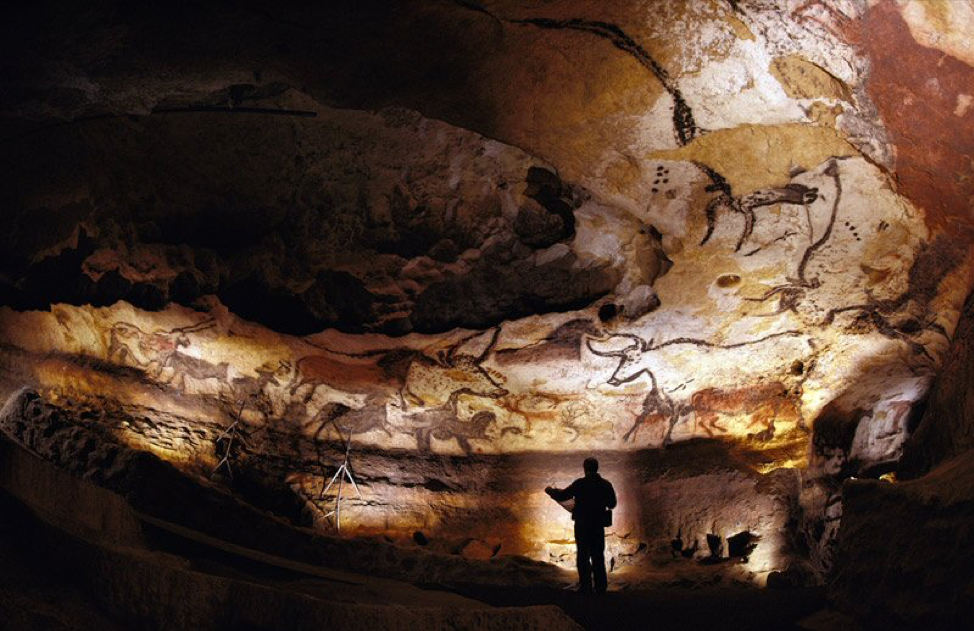



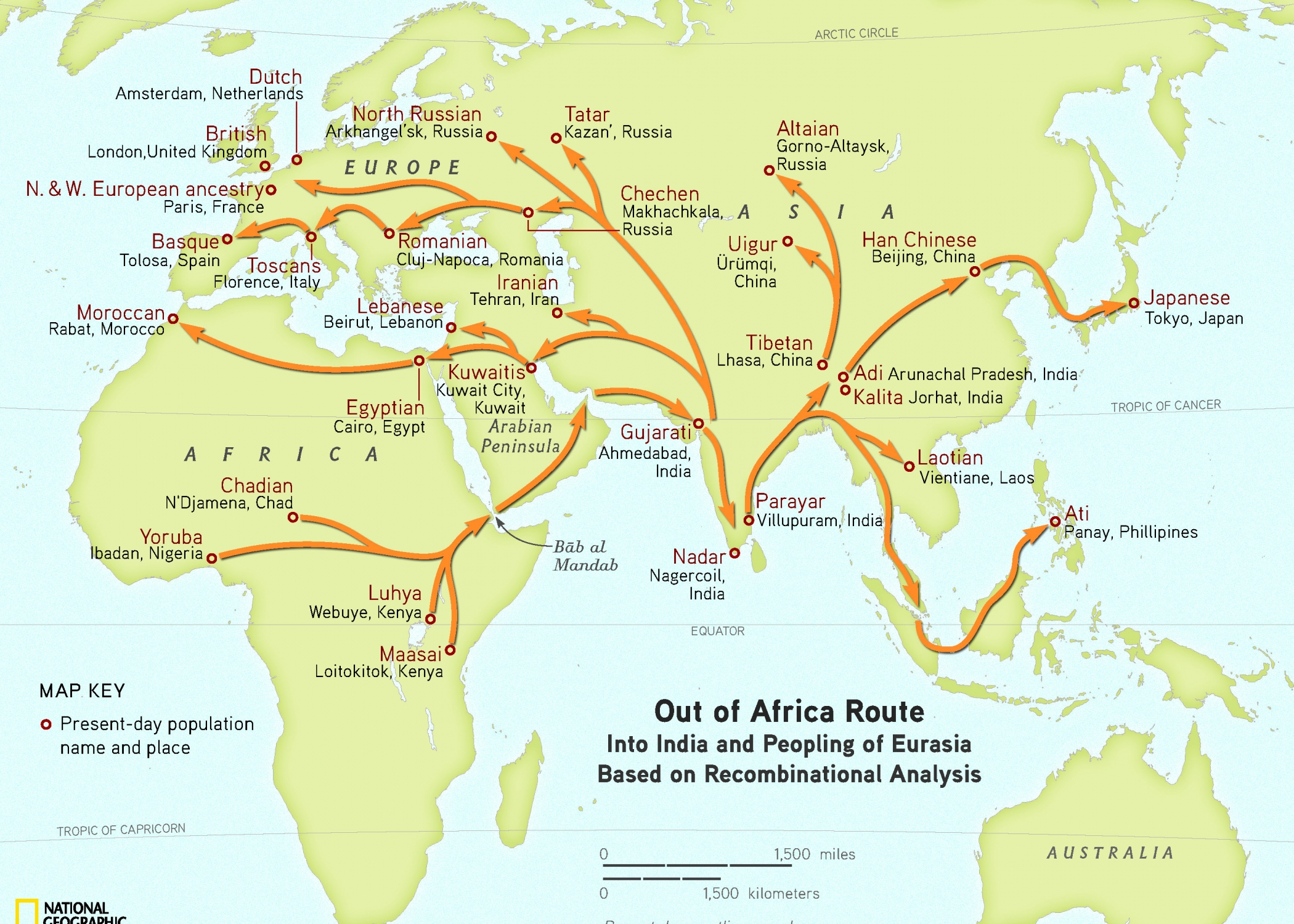
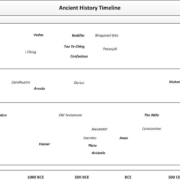
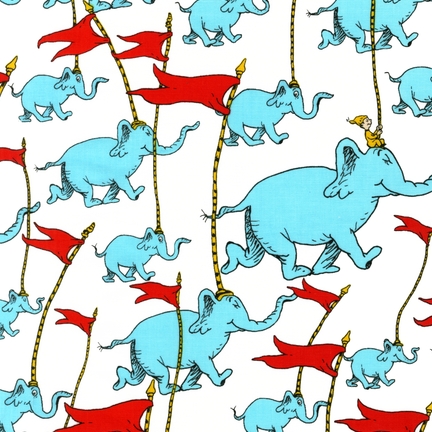
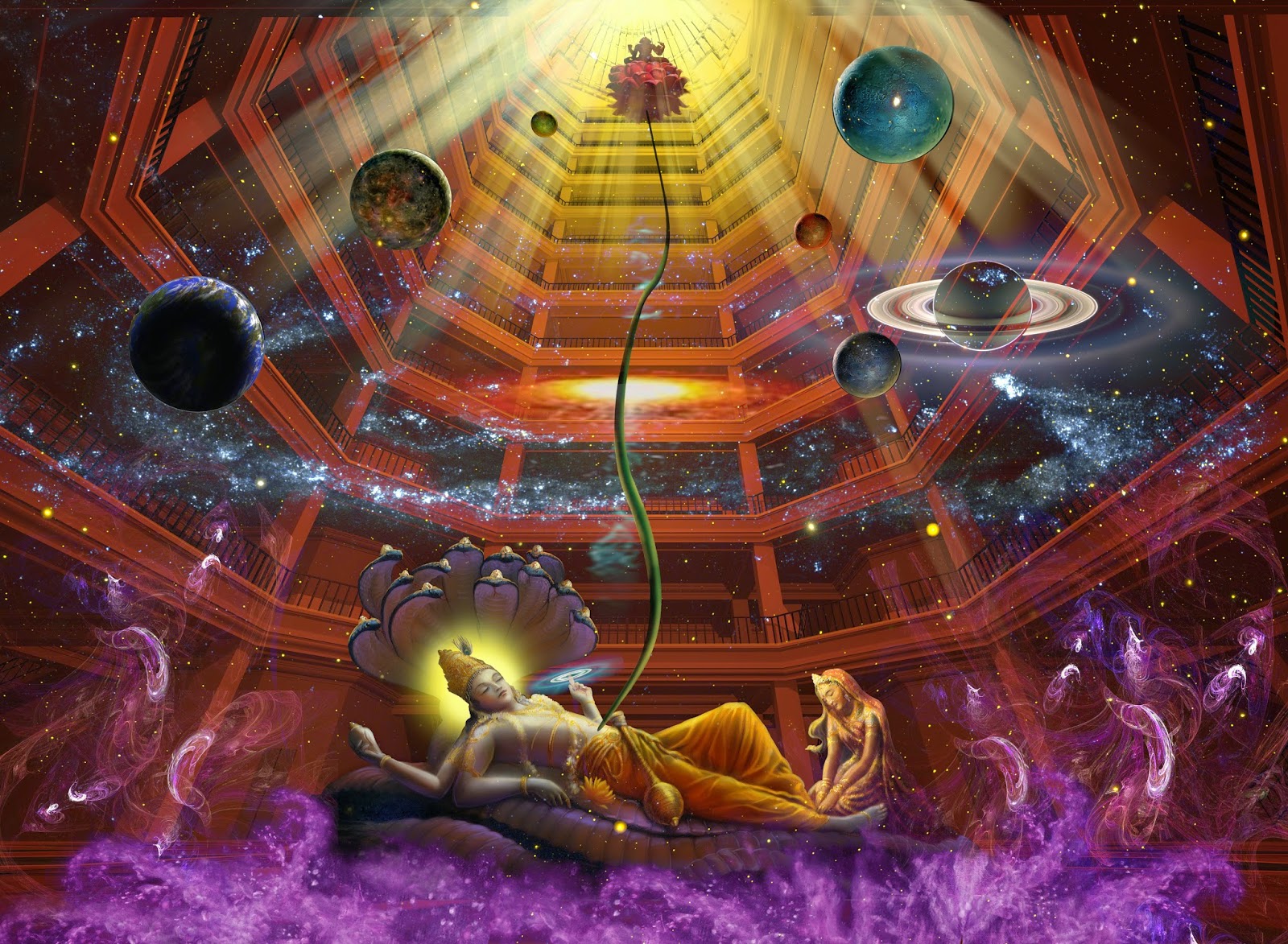

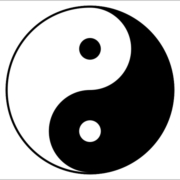
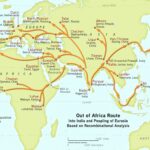

Leave a Reply
Want to join the discussion?Feel free to contribute!